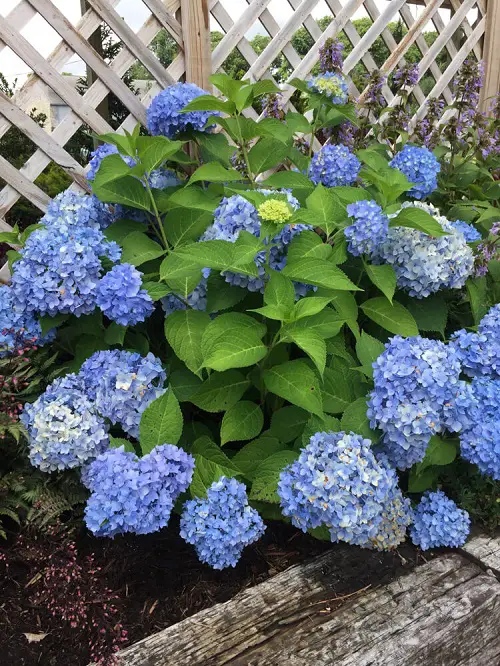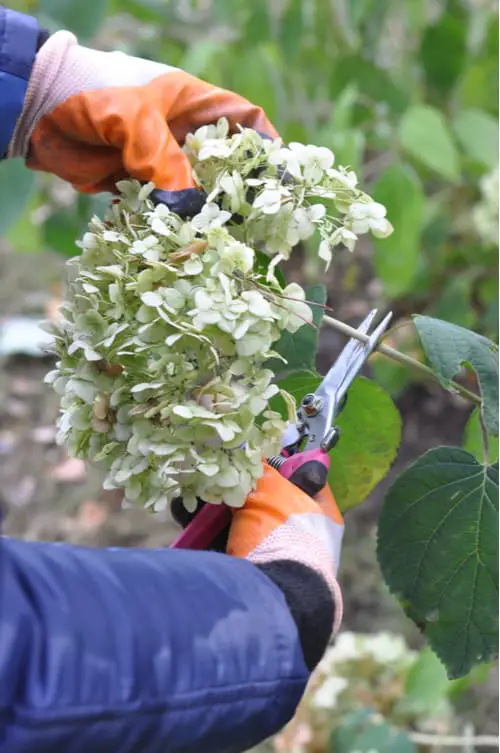Knowing How and When to Deadhead Hydrangeas will definitely help you have more flowers throughout the season!

Deadheading your hydrangea blooms can help your plant use its energy to produce more flowers and new growth. This is why it is essential to know how to do it the right way, which is what this article is about.
When To Deadhead Hydrangeas
Timing is important when deadheading hydrangeas and the best time to remove spent blooms is immediately after any of the flower clusters have faded. This allows your plant to redirect its energy towards developing new buds for the following year.
A common misconception is that you should do the deadheading in late winter or early spring, which is incorrect. It should be done regularly as and when you spot the fading flowers but according to the type of your hydrangea and climate.
1. Deadheading can encourage repeat blooming throughout the season for reblooming hydrangea varieties like Panicle Hydrangea that produces flowers on new wood (the current year’s growth). However, it’s vital to stop deadheading by early-september to allow the plant to prepare for winter.
2. On the other hand, if you have non-reblooming types like Hydrangea macrophylla that bloom on old wood (last year’s growth), deadheading can be done any time but should be stopped after late summer when the flowers start fading, this will ensure that next year’s buds remain intact.
How To Deadhead Hydrangeas

Before you start to deadhead hydrangeas, keep a pair of garden gloves and clean pruning shears handy. You can also carry a container to hold the faded blooms.
To deadhead, carefully snip off the spent flower about half an inch above the first set of large leaves with new buds forming. Make an angled cut to facilitate water runoff and minimize the risk of rot. Remove the faded blooms very carefully to preserve the developing buds for next season’s stunning display if you’re deadheading an old wood hydrangea.
If you want bushier growth as well, then start a bit lower and remove the flowering stem just above a second or third set of leaves from the branch. It’ll be bushier this way because pruning from there will encourage nodes below to grow two more branches.



